While elaborate royal dishes entice with their sophistication, it's the rustic simplicity of Vietnamese countryside cooking that holds a unique allure, evoking deep nostalgia and a sense of belonging in every Vietnamese heart.
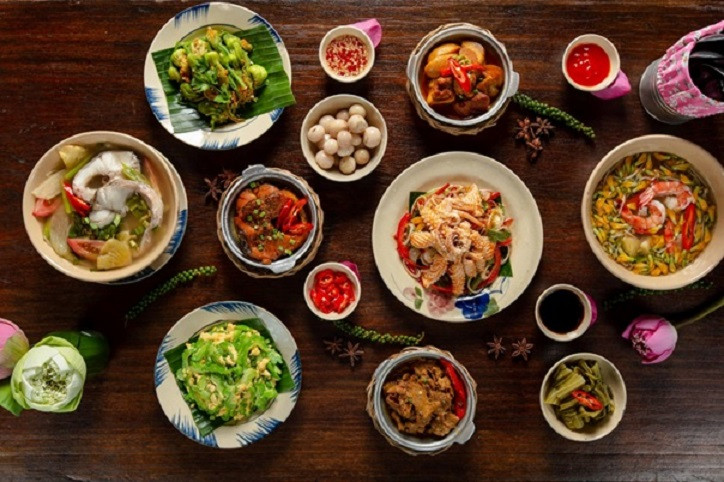
From North to South, each region boasts its own culinary signatures, imprinted with the cultural nuances, historical narratives, and traditional practices of its people. The North, with its subtle elegance, enchants with dishes like crab soup with vermicelli (*bún riêu cua*), Thanh Tri rice paper rolls (*bánh cuốn Thanh Trì*), and sticky rice (*xôi xéo*). The sun-drenched Central region tantalizes with the unforgettable bold flavors of Quang noodles (*mì Quảng*), Hue beef vermicelli soup (*bún bò Huế*), and sizzling pancakes (*bánh xèo*). Meanwhile, the South charms with its generous and subtly sweet offerings like savory mini-pancakes (*bánh khọt*), Phnom Penh noodles (*hủ tiếu Nam Vang*), and broken rice (*cơm tấm*).
Yet, regardless of origin, Vietnamese countryside cuisine consistently exudes an unpretentious, heartwarming charm. Simple, familiar ingredients like water spinach plucked from fields, plump fish from muddy ponds, and sour fish soup with fermented rice (*canh chua me đất*) transform in the skilled hands of home cooks into mouthwatering dishes, imbued with the essence of Vietnamese flavors.
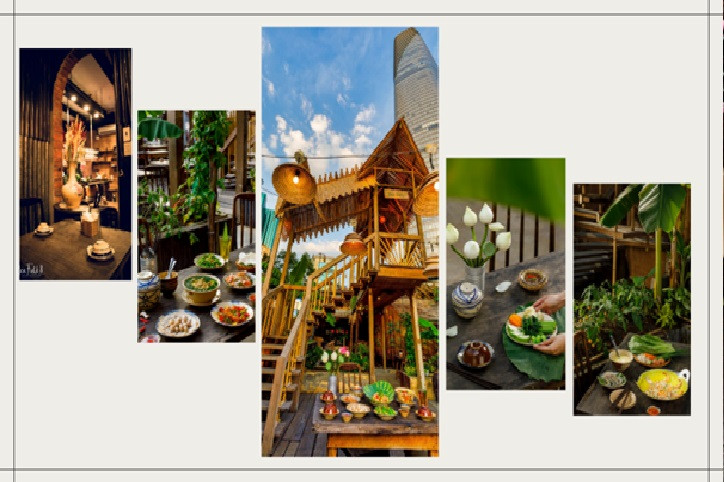
A family meal served on a clay stove, with unassuming earthenware bowls and chopsticks, gathered around a crackling fire, paints a beautiful portrait of familial warmth. This cherished tradition sits at the heart of Vietnamese food culture. It's not just sustenance, but a time for loved ones to reconnect, sharing stories and laughter after a long day's work.
Perhaps in recognition of this rustic charm, restaurants like Rice Field ("Rice Field - Homecooked Vietnamese Cuisine", located at 75-77 Hồ Tùng Mậu Street, Ben Nghe Ward, District 1, Ho Chi Minh City) meticulously recreate the tapestry of Vietnamese countryside cuisine in the heart of bustling Saigon. The restaurant evokes a bygone era with its traditional architecture - a terracotta tile roof, exposed brick walls, and simple wooden furnishings.
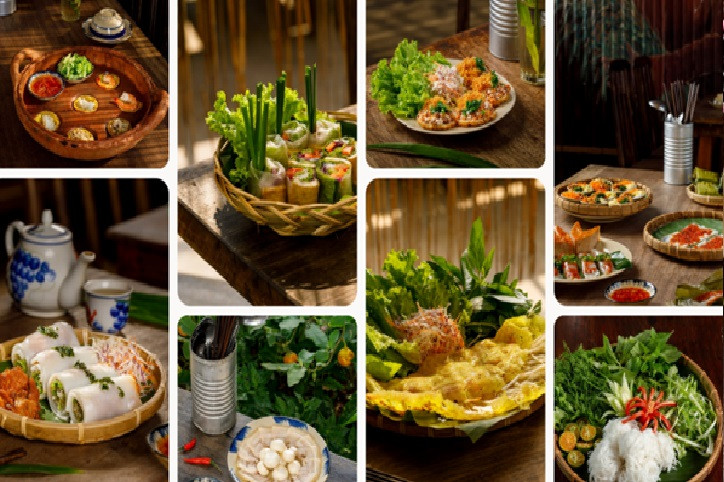
Rice Field's menu is a curated collection of familiar, home-style dishes crafted with fresh ingredients, transporting diners back to their roots with every bite. This dedication to authenticity, from the ambiance to the sourcing and preparation of each ingredient, has earned Rice Field the Michelin Guide's recognition as a restaurant worth experiencing for two consecutive years, in 2023 and 2024.
Stepping into Rice Field, or any countryside eatery, is like stepping back in time. The three-compartment house with its timeworn terracotta roof, the weathered brick walls bearing the marks of sun and rain, the lush gourd and squash vines shading the verandah – every detail evokes a sense of nostalgia. Simple wooden tables and chairs are arranged along the length of the house, each adorned with meticulously woven bamboo trays lined with fresh banana leaves, presenting an array of rustic delicacies.
The soft glow of oil lamps and lanterns casts flickering shadows on the aged brick walls, creating a warm and inviting atmosphere. On the walls, vibrant Dong Ho paintings depict scenes of daily life and familiar folktales, transporting diners back to their childhood.
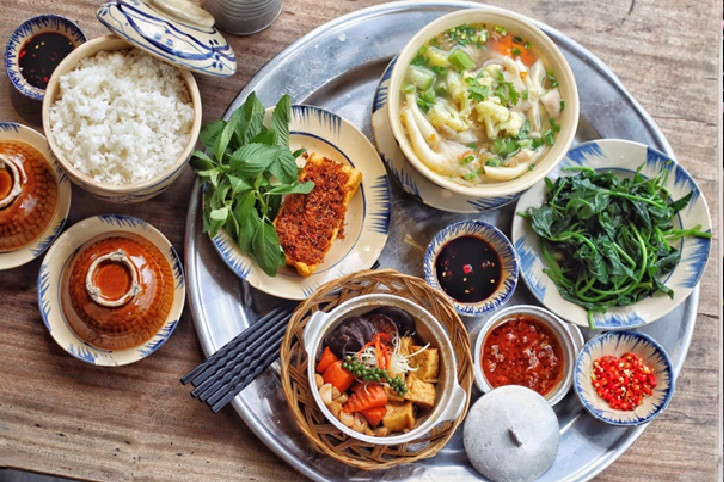
In the corner, a gleaming brown wooden cabinet, intricately carved, houses a collection of simple, rustic earthenware and ceramic teacups. The delicate fragrance of lotus tea mingles with the aroma of straw and wood smoke wafting from the kitchen, creating an unforgettable sensory experience.
Every element blends seamlessly, crafting a culinary space that encapsulates the unpretentious beauty of Vietnamese countryside life - familiar, heartwarming, and unforgettable. It's a place where people can reconnect with tradition, embrace a slower pace of life, and savor moments of peace and relaxation with family and friends.
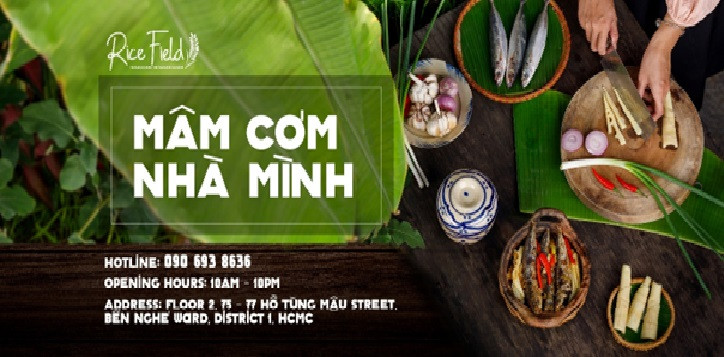
In today's fast-paced world, it's easy to lose sight of our roots. Yet, Vietnamese countryside cuisine holds a special place in the hearts of its people. Its rustic simplicity serves as a poignant reminder of our heritage, our origins, and the enduring values that bind us.
Preserving and celebrating the beauty of this culinary heritage is not just an individual responsibility, but a collective one. Incorporating these rustic dishes into the menus of restaurants and hotels, and the emergence of establishments like Rice Field, are vital steps in sharing the magic of Vietnamese cuisine with the world.
PV